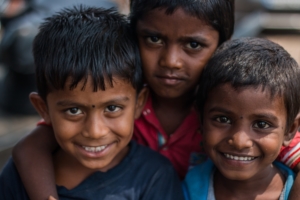5 Ways Anyone Can Help Fight Global Poverty

Poverty is an issue that does not always have a single, clear-cut solution. This leads to a myriad of action plans across the world that seek to address the root causes of poverty. The average person usually experiences these measures through the filters of government officials and media, which makes poverty reduction seem inaccessible to the everyday citizen. However, anyone can help alleviate poverty, not just politicians or public figures. Here are four ways to help fight global poverty.
Use Passions and Education
Poverty is a daunting topic and one cannot learn all its facets in one sitting. The easiest way to begin expanding one’s knowledge about poverty is to start somewhere familiar. Consider any relevant interests or hobbies. For example, sports lovers could type “sports and poverty” into a favorite search engine and learn about issues that impact their interests. Starting off with a topic that is familiar makes it easier to digest new information and keep one’s interest before diving into more specific topics as the individual gains more knowledge.
Finding poverty-related information relevant to one’s interests by discovering articles, videos and social media pages is a great way to educate oneself. Knowledge is a powerful tool to help fight global poverty.
Support Ethical Brands
Fashion lovers will find that the fashion industry is a significant contributor to poverty around the world. In particular, companies produce fast fashion in hazardous sweatshops. Companies make articles so that they wear out within a few wears and harmful chemicals, such as lead, often contaminates them.
Fast fashion companies like Zara and H&M design clothing so that it is outdated within one week thanks to the rise of micro-seasons. Rather than releasing designs corresponding to the traditional seasons, these companies put out 52 clothing collections each year. Some companies get new clothing shipments in their stores twice a week, while others list upwards of 400 items on their websites per week.
Companies can produce this clothing quickly and cheaply due to the usage of low-quality materials and not paying workers a living wage. Estimates determine that informal workers, often women and children, sew 20 to 60 percent of fast fashion garments in their own homes. Globally, 40 million people are garment workers, and 85 percent of those are women. Children usually add details like sequins and beading, which machines can apply easily, in order to cut equipment costs.
To stop supporting fast fashion brands and help fight global poverty, there are a few steps everyone can take. Websites and apps like Ecoture and Good On You provide ratings of brands’ ethics and practices, while also providing a one-stop-shop for ethical brands. Ethical brands like Organic Basics, Kowtow, People Tree and HARA are just a few of the highly ranked clothing companies out there. Thrifting is also a great way to stop creating a demand for fast fashion while not breaking the bank.
Support the Sustainable Development Goals
The Sustainable Development Goals are a set of 17 goals set forth by the United Nations in 2015. They aim to support economic growth and to resolve global issues such as poverty, hunger, lack of access to water and inequality by 2030. These goals are for countries and governments, but individuals can support progress toward the Sustainable Development Goals as well.
In June 2019, Forbes indicated that millennials, unlike older generations, have distinct consumption habits and preferences that are conducive to achieving various Sustainable Development Goals. Millennials are more likely to be conscious of ethical brands, are more ethnically diverse and are financially, socially and health-conscious. Others often think of them as more educated and technology-based than previous generations as well. Other generations can advance Sustainable Development Goals by adopting similar habits, like becoming more financially conscious through impact investing which allows individuals to put their money into socially responsible investments (SRIs).
Get Involved
Individuals can maximize their efforts by involving themselves with a larger group. A great way to help fight poverty is by finding a cause or nonprofit to support. Many organizations help fight global poverty even if that is not their main goal. Organizations dedicated to women’s empowerment, providing access to clean water, child welfare or improving access to education are all causes that decrease poverty rates. Pick a favorite organization and donate some time or money to them on a regular basis. Great resources to start with are The Borgen Project, Days for Girls and Equality Now.
Mobilize
Another way to help fight global poverty is to multiply efforts by contacting local leaders and encouraging others to do the same. People know this as mobilizing and it is a great way to create change. Congressional leaders and their staff receive letters, emails and calls from constituents every week and the more they see a particular issue or piece of legislation come up, the more likely they are to support it. The Borgen Project details more ways to get involved and connect with Congressional leaders.
These five points are a great way for anyone to help fight global poverty and encourage others to join the cause. Together everyone can make the difference that eliminates poverty for good.
– Shania Kennedy
Photo: Pixabay
